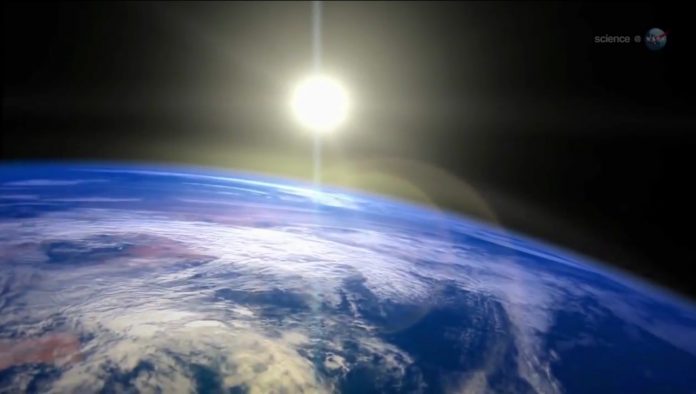The Antarctic ozone hole should continue to recover gradually as CFCs leave the atmosphere, but complete recovery will take decades.
New measurements show that the decline in chlorine—resulting from an international ban on manmade chemicals called chlorofluorocarbons (CFCs)—has resulted in about 20 percent less ozone depletion during the Antarctic winter than there was in 2005, the first year measurements were made by NASA’s Aura satellite.
CFCs are long-lived chemical compounds that eventually rise into the stratosphere, where they are broken apart by the Sun’s ultraviolet radiation, releasing chlorine atoms that damage and destroy ozone molecules.
“We see very clearly that chlorine from CFCs is going down in the ozone hole, and that less ozone depletion is occurring because of it,” lead author Susan Strahan, an atmospheric scientist from NASA’s Goddard Space Flight Center in Greenbelt, Maryland, said in a statement.
The study represents the first time measurements of the chemical composition inside the ozone hole were used to confirm both that the ozone depletion is decreasing and the decrease is caused by the decline in CFCs.
The scientists determined how ozone and other chemicals have changed from year to year using data from the Microwave Limb Sounder (MLS), which measures microwave emissions aboard the Aura satellite.
This enabled the researchers to measure trace gases over Antarctica during the dark southern winter.
“During this period, Antarctic temperatures are always very low, so the rate of ozone destruction depends mostly on how much chlorine there is,” Strahan said. “This is when we want to measure ozone loss.”
To confirm that the depleting ozone decrease was due to the elimination of CFCs the researchers used MLS to measure hydrochloric acid.
NASA scientists are able to determine that the total chlorine levels are declining annually on average by about 0.8 percent by measuring nitrous oxide levels and comparing it with the measurements of hydrochloric acid.
“By around mid-October, all the chlorine compounds are conveniently converted into one gas, so by measuring hydrochloric acid we have a good measurement of the total chlorine,” Strahan said.
In 1987, two years after the discovery of the Antarctic ozone hole, several nations signed the Montreal Protocol on Substances that Deplete the Ozone Layer, which regulated ozone-depleting compounds. Later amendments to the Montreal Protocol completely phased out production of CFCs.
“CFCs have lifetimes from 50 to 100 years, so they linger in the atmosphere for a very long time,” Anne Douglass, a fellow atmospheric scientist at Goddard and the study’s co-author, said in a statement. “As far as the ozone hole being gone, we’re looking at 2060 or 2080. And even then there might still be a small hole.”















